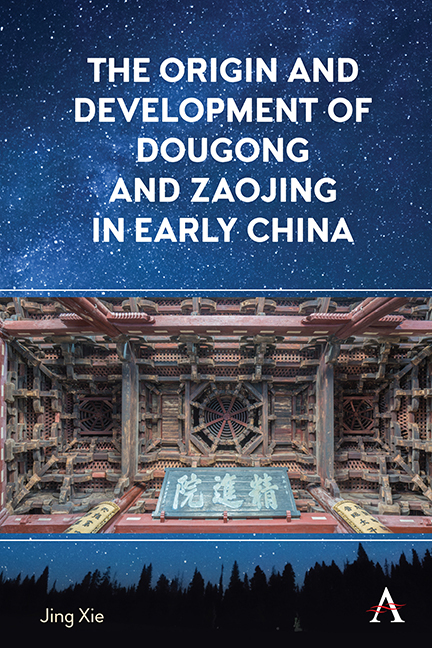2. - The Development of Column and Bracket Sets in the Han Dynasty
Published online by Cambridge University Press: 22 November 2023
Summary
Although wooden structures have dominated Chinese architecture for more than three millennia, none from before the Tang dynasty have survived. Fortunately, their forms were mirrored in stone architecture, reliefs, pottery models (mingqi), murals, and even decorative housewares. The Han dynasty, in particular, gave rise to numerous representations of dougong in tomb structures, stone reliefs, pottery models, freestanding stone towers (que), and literary descriptions. My research builds on these available sources.
To Liang Sicheng and Liu Zhiping, the development of dougong in architecture reached mature status during the Han dynasty. Yet they, like most modern researchers, have regarded it primarily as a structural element, and their analyses have been largely typological, tracing the evolution of various dougong systems over succeeding dynasties. As Nancy Steinhardt has summarized, “Han bracket sets were studied according to three principal features used in all later bracketing”— that is, the cap block and other blocks, the arm, and the number of layers.
Chapter 2 takes a different approach, examining the column and bracket set not as a formal or structural element, but as a symbolic, social, and cultural one. In this respect, I partly follow the lead of Jiren Feng, who has studied the symbolic associations of column and bracket sets in the Song dynasty. Through a detailed analysis of literary sources from the tenth to the twelfth centuries, with the focus on Yingzao fashi, Feng points out that the multilayered dougong system was often likened to flowers and branches to suggest the auspicious “blossoming” of the structure. Although Feng adduces some physical and literary evidence from early China to support his argument, I find that the meanings attendant on the column and bracket set in earlier centuries differed considerably from those prevalent during the Tang–Song dynasties. The account below focuses on the role of dougong during the Han dynasty, when the element was primarily associated not with natural forms, but rather with beliefs about the heavens, mythology, and the afterlife.
The Political Symbolism of the Han Dynasty
As the second regime to unify the central territories of what is now known as China, the Han dynasty is commonly regarded as a golden age in Chinese history, the influence of which is still evident. The Han gives its name, for example, to China's majority ethnic group and to its common written script.
- Type
- Chapter
- Information
- Publisher: Anthem PressPrint publication year: 2023

